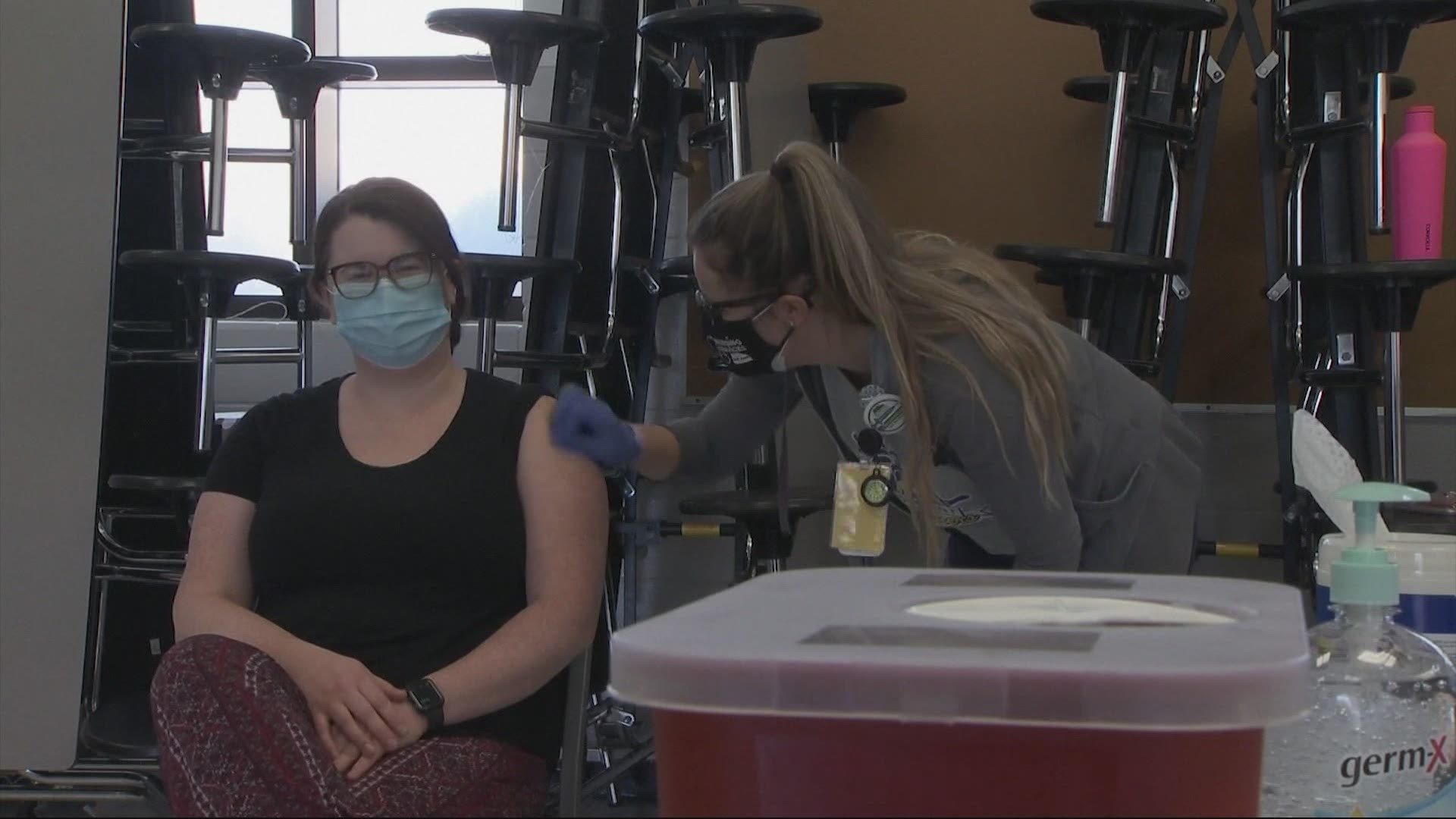PORTLAND, Ore. — Oregon Gov. Kate Brown released a new vaccine eligibility timeline Friday morning that moves up some eligibility dates and establishes May 1 as the date all Oregonians 16 and older will be eligible to receive the COVID-19 vaccine.
Starting Monday, counties that attest in writing they've vaccinated the majority of residents 65 and older can begin vaccinations for the next eligible group. Migrant and seasonal farmworkers who have already started working can start receiving the vaccine that day.
On March 29, all adults 45 to 64 who have underlying health conditions, agricultural, migrant and seasonal farm workers, people in congregate living and those experiencing homelessness will be eligible for the vaccine.
Three weeks after that, on April 19, frontline workers as defined by the CDC (including grocery workers, public transit workers and U.S. Postal Service workers — see Page 2 of the document below for a complete list), multigenerational household members and adults 16 to 44 who have underlying health conditions can start receiving the vaccine.
Twelve days later, on May 1, all Oregonians 16 and older will become eligible to receive the vaccine.
During Friday’s briefing, both Brown and Allen were clear that the timeline is dependent on the federal government sending the expected amount of doses to the state. They also said that after each date in the timeline, when more Oregonians become eligible, there will be a temporary bottleneck as the supply of vaccines catches up to the number of people trying to get a vaccination.
Even though all Oregon adults will be eligible on May 1, not everyone will be able to get an appointment immediately.
“I want to be crystal clear,” Allen said. “Not every Oregonian will have a vaccination appointment waiting for them. It will take a few weeks for supply to catch up to demand.”
Allen said that as long as the expected number of doses arrives from the federal government, the state will have enough vaccine by the end of May for every Oregon adult to get a first dose. Allen outlined how the state expects to reach that target.
March 29: The total number eligible people in Oregon will exceed 2 million. By that time, Oregon will have received about 1.4 million doses and will have administered first doses to close to 1.2 million people. By April 19, the state will have the vaccines and capacity to administer between 1.7 and 1.9 million first doses, which is more than three-fourths of the eligible population at that time.
April 19: The total number of eligible people will exceed 2.8 million. Allen cautioned that there will be a temporary traffic jam as supply catches up to demand, but by May 1, the state expects to have received approximately 2.5 million doses, enough supply to vaccinate almost 90% of eligible people at that time.
May 1: The total number of eligible people will exceed 3.2 million. Again, the state will see a temporary bottleneck while supply catches up to demand, but by the end of May, Oregon expects to receive 3.3 million first doses, enough vaccine to give every adult Oregonian at least one shot.
RELATED: 'These are essential people': Grocery store workers frustrated with Oregon's vaccine timeline
Oregon vaccine timeline
March 22
- Counties that attest to largely completing the vaccination of residents 65 and older may begin vaccinating the next eligible groups
- Vaccinations may also begin for migrant and seasonal farmworkers in counties where they are currently already working
March 29 | Phase 1B, Group 6
- All adults 45-64 with underlying health conditions
- Migrant and seasonal farm workers
- Seafood and agricultural workers
- Food processing workers
- People living in low-income senior housing, senior congregate and independent living
- Individuals experiencing homelessness
- People currently displaced by wildfires
- Wildland firefighters
- Pregnant people 16 and older
April 19 | Phase 1B, Group 7
- Frontline workers as defined by the CDC
- Multigenerational household members
- Adults 16-44 with underlying health conditions
May 1
- All Oregonians, 16 and older
More coverage of the COVID-19 vaccine:

